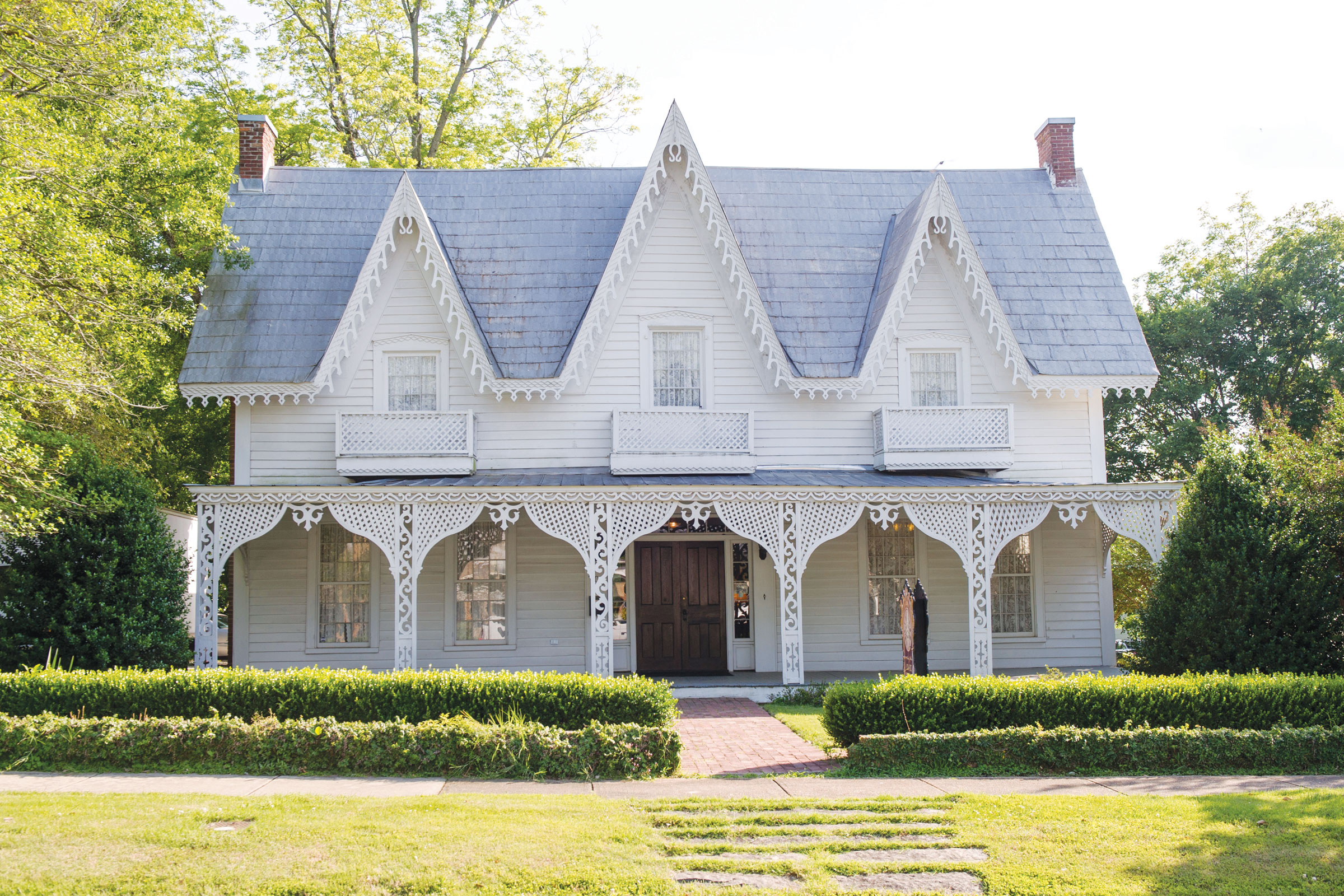By Fred Woods
Editor
The word “Gothic” typically summons images of dark, spooky homes and buildings adorned with spires, pointed-arch windows and elaborate detailing, sometimes including gargoyles. This “haunted house” architectural style is known as Gothic Revival and was popular in building churches and collegiate buildings in the 1800s.
A subcategory of Gothic Revival is the much lighter and less expensive Carpenter Gothic architecture, frequently used for homes
Unlike Gothic Revival structures, Carpenter Gothic homes are typically made of wood rather than brick or stone. They are much smaller than most Gothic Revival structures and most were built between the 1840s and 1870s.
The style was born from a demand for less expensive homes that could be built quickly. The invention of steam-powered scroll saws meant elaborate trim-work was no longer painstakingly molded or cut by hand. Intricate moldings could be mass produced and catalogs began appearing across the U.S. and England selling patterns for homes.
Carpenter Gothic homes are described as typically featuring steeply pitched roofs and gables, gingerbread ornamentation, fancy scroll work, barge boards, carved porch railings, and strong vertical design elements, such as board and batten siding. Window trim typically replicated the masonry trim of English Gothic cathedrals.
Carpenter Gothic architecture is not common in the southern United States but was more popular in the northeast and the midwest. Only about twenty Carpenter Gothic homes remain in Alabama and two of them are in Opelika.
Where are ours? Spring Villa mansion is one, built in 1850 by former slave and master bridge builder, Horace King, for Penn and Mary Yonge. Mary Goodwin Yonge was the daughter of John Godwin, King’s former owner and life-long friend.
The other is known as the Gingerbread House which was built in 1865 by the John C. Edwards family. Four generations of the Edwards family lived in the house but it had been vacant and virtually abandoned for 25 years when present owners John and Mary Hendricks bought the house in 2007. They set out to restore the house with no change to the exterior structure and completed this task in 2009.
The Gingerbread House, at 405 S. Ninth St., now houses the Old Timers and Chimers Clock Shop and Museum and both can be toured during open hours Tuesdays through Fridays. Thanks to John Hendrick’s determination it is one of three registered Gingerbread Houses in the nation.
Spring Villa, now the centerpiece of Spring Villa Park in Opelika is unusual because it is basically two houses set perpendicular to one another. The first was built by Horace King in 1850. The second house was added in 1934 and a breezeway was built between the two but the breezeway no longer exists.
The history of Spring Villa, the house, the once-great spring and the park were detailed in an article in the Opelika Observer January 9, 2016. The responsibility for the care and maintenance of all three rest with the city of Opelika’s Parks and Recreation Department. They don’t always do a very good job, despite the presence of a full-time caretaker stationed and housed at Spring Villa.
Drive out Alabama Highway 169 past the old tire plant and turn left on Spring Villa Road (Lee Road 148). Spring Villa is about 1/2 mile on the right.


